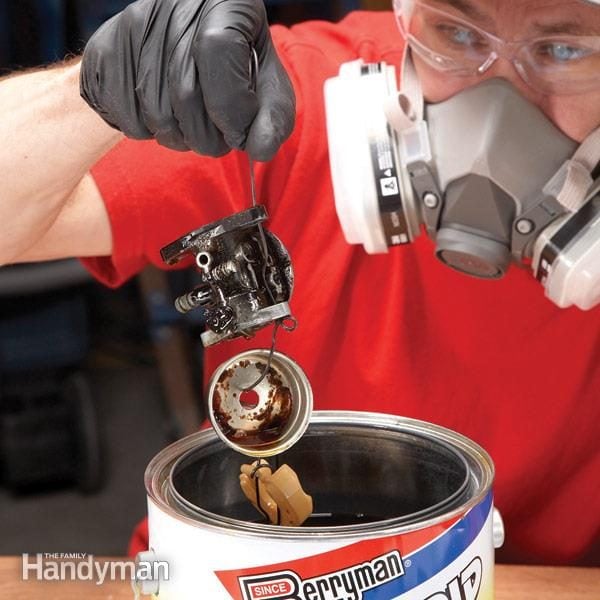Small Engine Repair For Dummies Free Download
Small Engine Repair For Dummies Free Download Pdf Ebook time analysis repair guide - small engine discount - foreword the repair times presented in this time analysis repair guide are intended to help the servicing dealer complete warranty claims, but. Mar 25, 2014 'Small Engine Repair For Dummies' provides you with a do-it-yourself manual for small engine repair, complete with step by step instructions and money-saving tips Proper care and maintenance is critical to ensure an engine's lifetime and performance are maximized. He has seen all aspects of the auto repair industry from small shops to large dealerships. He is the co-owner of Crawfords Auto Repair in Mesa, Arizona. Auto-repair-guide-free-ebook/ to download for free. Crawfords Guide to Beginners Auto Maintenance & Repair www.CrawfordsAutoService.com. Buy Small Engine Repair for Dummies at Walmart.com. Free Grocery Pickup Reorder Items Track Orders. Departments See All. Cold Weather Shop. Cold Weather Shop.
Following some basic auto repair safety rules and a monthly maintenance schedule will keep you safe and prevent auto problems later. Disassembling auto parts and putting them back together is easier if you stay calm and avoid distractions.
Auto Repair Safety Rules
When you’re repairing your car or doing basic maintenance, practice these safety methods to avoid injury to yourself and damage to your automobile and to be prepared in case of a mishap:
Don’t smoke while you’re working on your vehicle.
Never work on your vehicle unless the parking brake is on, the gearshift is in Park or Neutral, and the engine is shut off (unless it has to be running for you to do the work).
Be sure that the parts of the engine you’re working on are cold so that you don’t get burned.
Never jack up a car unless the wheels are properly blocked.
Use insulated tools for electrical work.
Before using a wrench or ratchet on a part that seems to be stuck, make sure that if it suddenly comes loose, your hand won’t hit anything. To avoid the possibility of bruised knuckles, pull on wrenches rather than push them whenever possible.
Before working on your car, take off your rings, tie, long necklaces, and other jewelry, and tie back long hair.
If you’re using toxic chemicals such as coolant, cleaners, and the like, keep them away from your mouth and eyes, wash your hands thoroughly after using them, and either store them safely away from pets and children or dispose of them in a way that’s safe for the environment.
Know that gasoline is extremely dangerous to have around. Not only is it toxic and flammable, but the vapor in an empty can is explosive enough to take out a city block.
Work in a well-ventilated area. If possible, work outdoors in your driveway, your backyard, or a parking lot. If you must work in your garage, be sure to keep the garage door open and the vehicle as close to the door as possible.
Keep fire extinguishers handy. Place one in your garage and one under the front seat of your vehicle. (Be sure to secure it with a bracket that will prevent it from rolling under the pedals.)
Monthly Auto Maintenance Checklist

Taking the time for regular under-the-hood vehicle checks will help prevent problems later. Spending 15 minutes every month for an under-the-hood check may prevent 70% of problems that lead to highway breakdowns. Convinced? Then run through the following list once a month or every 1,000 miles:
| Check the air filter. | Check the automatic transmission fluid level on the dipstick. |
| Check the accessory belts. | Check the brake fluid. |
| Check the battery. | Check the power-steering fluid. |
| Check the coolant. | Check the windshield wipers and amount of windshield washer fluid. |
| Check the hoses. | Check the wiring. |
| Check the oil level on the dipstick. | Check the tires. |
Tips for Easily Disassembling and Reassembling Auto Parts
The first rule of auto repair jobs is never hurry! If things get rough, take a break. You may get a whole new perspective when you go back to work. Keep distractions to a minimum, don’t answer the phone, keep the kids and the dog away, and relax. Don’t panic if you hit a snag — sit quietly and think about it. If the parts fit together before, they’ll fit together again.
The following steps outline a process for disassembling and reassembling complex auto parts — or anything, for that matter:
Mar 29, 2013 Hi evry1, I have a wireless Huawei Quidway wa1003a modem for my internet connection. Now the problem is that my internet is connected, my torrents are running at 110kbps but when i open any site on my browser, nothing shows up. Jun 09, 2010 I am able to download torrents but cant access internet. Discussion in 'Web & Email' started by russellian0124, Jun 2. I should add that about 50% of the time my internet connection is perfectly fine. The other 50% I am able to download torrents but unable to access internet. Feb 02, 2014 my connection speed is 50/5 Mbit. That said, uTorrent should download with a speed of 6.25 MBps right? It never reached that speed in 2 years, since I upgraded my connection to 50/5Mbit. Upload and download graph and the active torrent in the mainview. With also pref->advanced->gui.graph_overhead and gui.overhead_in_statusbar true. 
Get a clean, lint-free rag and lay it down on a flat surface, near enough to reach without having to get up or walk to it.
After you remove each part, you’ll lay it on the rag, which shouldn’t be in an area where oil or dust or anything else can fall on it and foul the parts.
If you’re going to use something that blasts air for cleaning purposes, leave enough of the rag uncluttered to flip it over the parts resting on it.
Before you remove each part, ask yourself the following questions:
What is this thing?
What does it do?
How does it do it?
Why is it made the way it is?
How tightly is it screwed on (or fastened down)?
As you remove each part, lay it on the rag in clockwise order, with each part pointing in the direction it lay in when it was in place.
When you’re ready to reassemble things, the placement and direction of each part tells you when to put it back and how it went.
If you’re making notes, assign each part a number indicating the order in which you removed it — part #1, part #2, and so on.
You can even put numbers on the parts with masking tape if you’re afraid that the rag may be moved accidentally.
When you’re ready to reassemble everything, begin with the last part you removed, and then proceed counterclockwise through the parts.
Small Engine Repair For Dummies Free Download For Mac
free small engine repair manuals
|